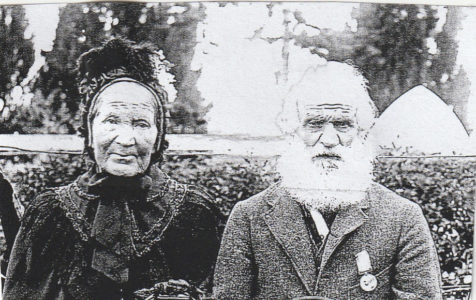As Howick and districts count down to the 175th anniversary, the Times continues its series by Alan La Roche giving readers a glimpse of life as it used to be. The countdown began at the 170th in 2017
Corporal Thomas Heath died in January 1902 aged 87 and was buried in All Saints Anglican cemetery with full military honours. Thomas came from Trowbridge, Wiltshire in England. He joined the Royal Marines as a young man but was wounded fighting in Syria for which he received a Silver Medal and was discharged when only 27-years-old.
Only six soldiers per regiment of 100 men were allowed to marry while on service. When they were discharged, they looked for a wife. Thomas married Jane aged 22 years six months before sailing to New Zealand. His pension for military service was five pence a day for life which was a paltry income.
The Fencible soldiers and families on the Sir George Seymour sailed from London in August 1847. Thomas suffered from dysentery and the ship’s doctor gave him small doses of turpentine with opium with good results.
Sailing down the coast of Africa, a well-armed pirate ship circled the Sir George Seymour, forcing the captain to order all women and children below decks and soldiers in uniform to parade on deck. The pirates demanded, “what are you carrying and to where?” After three days the pirates gave up and sailed away.
The Sir George Seymour’s captain was greatly relieved as in the ship’s hold he had wooden crates of gold sovereigns and half sovereigns for 700 soldier’s pensions over their seven-year term of service in Auckland.

Thomas, Jane and other passengers were trans-shipped from Auckland to Waipaparoa-Howick Beach on December 16,1847 where local Maori helped build raupo whares until the Government built their wooden cottages.
Corporal Thomas Heath and his wife Jane lived in Wellington Street and soon had seven children. After Sergeant Patrick Pearce died, they moved in 1861 into his larger cottage in Nelson Street. Thomas was able to buy five acres in Gills Road, Pakuranga, for 10 guineas [just over $20] and grazed six head of cattle.
Making butter was a good income in the early years. Later potatoes and cabbages were profitable crops.
Thomas Heath was one of the younger Fencible soldiers and worked as a labourer for Anglican Reverend Vicesimus Lush on his Cockle Bay farm where he dug ditches for drainage and boundary fences, as well as harvesting wheat and oats.
His youngest daughter Sarah Heath used to clean All Saints Church and launder the priest’s surplice using the old-fashioned iron with a curved funnel kept hot by using red hot coals from the kitchen fire.
Their cottage and garden in Nelson Street (opposite Owairoa School of today) was bought after Sarah died in 1957 by the Howick Play Centre. But in 1968 the old cottage was demolished for a new building as well as the old orchard behind with camellia and holly trees that were in front of the cottage.
Thomas Heath’s wife Jane died in 1913 aged 88 and many of their descendants still live in the area today. Many of the hard-working but moderate drinking early settlers lived long and productive lives.
Alan La Roche
Howick Historian









